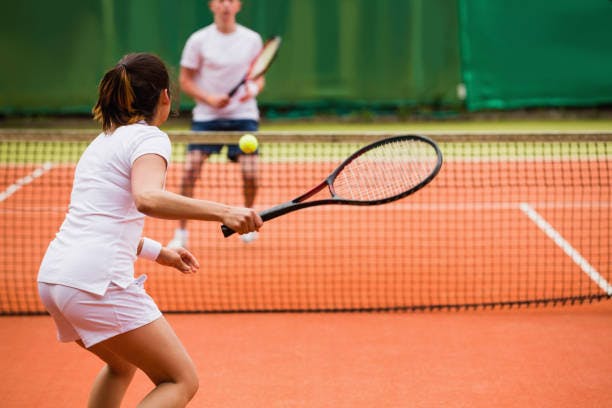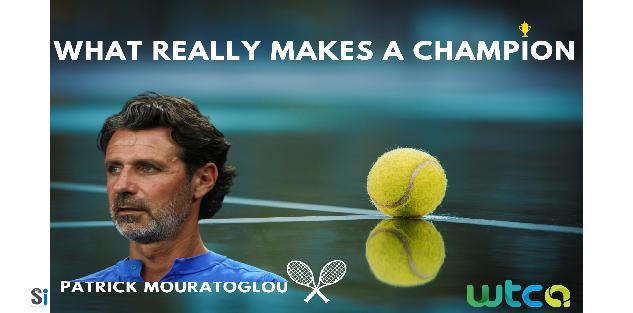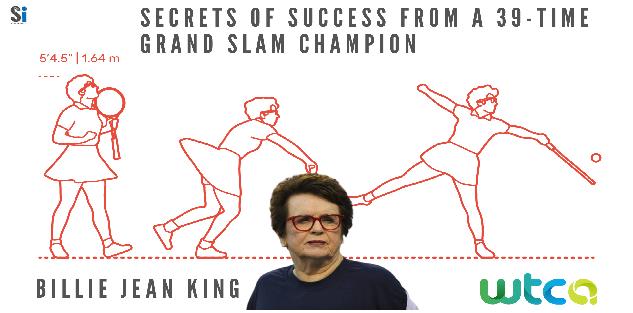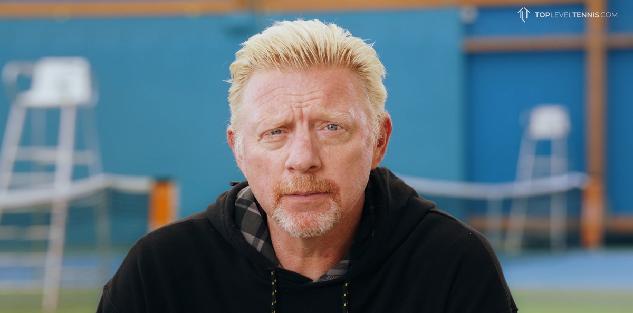Featured courses
- Four Tips to Turn Your Tennis Forehand Into a Weapon by Grant Young
- Tennis Legend Billie Jean King’s 4 Responsibilities as a Player by Grant Young
- Two Top Priorities For Success in Doubles Tennis by Grant Young
- Three of Tennis Whiz Lisa Dodson’s Tips to Improve Serves by Grant Young
- Three Elite Tennis Ball Machine Drills by Grant Young
- Three Keys For Correcting Tennis Serving Mechanics by Grant Young
- Five Tactical Tips to Win More Tennis Matches by Grant Young
- 4 Lessons Patrick Mouratoglou Learned From Coaching Serena Williams by Grant Young
- Four Effective Backhand Tennis Drills by Grant Young
- Two of Legendary Tennis Coach Paul Annacone’s Crucial Player Development Tips by Grant Young
- A Step-By-Step Guide To Mastering The Serve by Krsto Arsenijevic
- How to Dominate the Clay Court in Tennis by Krsto Arsenijevic
- 10 Essential Tennis Drills Every Coach Should Know by Brandon Ogle
- 8 Pre-Game Exercises to Prime Your Tennis Team for Competition by Neil Brown
- 7 Proven Tips To Develop Your Net Game in Tennis by Krsto Arsenijevic
- 10 Essential Tennis Drills Every Coach Should Know by Krsto Arsenijevic
- Developing Players - Two-handed backhand by Ramon Osa
- 6 Simple Warm-up Exercises For Tennis Players by Krsto Arsenijevic
- How to Beat a Serve-and-Volley Player by Krsto Arsenijevic
- How To Build Your Kinetic Chain Like Djokovic by Aiden Lefebvre
- How to neutralize a lefty in Tennis by Aiden Lefebvre
- 5 Tips To Improve Your Tennis Game Today by Krsto Arsenijevic
- Everything You Need to Know Before Buying New Tennis Shoes by Brandon Ogle
- Amp up your tennis practice with situational play by Neil Brown
- Tennis Equipment List by Brandon Ogle
- How to Master The One-handed Backhand in Tennis by Krsto Arsenijevic
- Modern High School Tennis Coaching Obstacles by Neil Brown
- Increase Your Tennis Fitness Level With 3 Easy Drills by Krsto Arsenijevic
- How to Successfully Hit a Two-Handed Backhand by Brandon Ogle
- How to Become a Grass Court Specialist in Tennis by Brandon Ogle
- How to Dominate the Hard-Court like Serena Williams by Brandon Ogle
- Hit a Drop Shot to Keep Your Opponent Off-Balance by Brandon Ogle
- New Tennis Injury Findings Linked to Neutral & Closed Stances by Oscar Wegner
- CHATTING WITH TENNIS PRO BRUCE CONNORS by Brandon
- How to Become a Mentally Strong Tennis Player by Brandon Ogle
- How to Win the Game of Angles by Hitting Cross-Court Shots by Eric Mahnke

Modern High School Tennis Coaching Obstacles
- By Neil Brown
With every new season, and with every new group of players, tennis coaches must be quick learners as they face the challenge of leading a new team and helping create an identity for their programs. “How do I reach this player?” “How do I get these players to play together as a doubles team?” “Do I make allowances for tournament players, and if so, how are my other players going to react?”
Tennis is somewhat unique among varsity sports in that many of the players spend considerable time playing in tournaments, oftentimes facing fellow teammates.
On some top-level teams, each player may have a personal coach, and it is not uncommon for players to ask that their time in private lessons count as attending practice.
I can only imagine how hard it is for these coaches to develop a cohesive group with a “team first, school first” attitude. As a varsity lacrosse coach, I coach a sport that is in the truest sense a team sport -- every position on the team and every player on the team contributes to each other’s success. In tennis, on the other hand, winning is simply the result of adding up individual victories. It is a team of solo artists.
On my team, captains play an essential role and are the conduit through which players express their concerns to me as their coach. Choosing captains is an important job for the players and me. I often wonder how that is done on a tennis team. Do you choose the top players, even though they might spend much of their time playing tournaments?
This begs an even more important question: As a tennis coach, do you even accept “part-time” players on your team?
And if you do accept players with personal coaches, how do you react when one of your players tells you “that isn’t what my own coach tells me to do?”
Tennis coaches, like all coaches, experience teachable moments. On a lacrosse field, I can pull a player off the field, take him aside, and have a quiet moment where I can instruct. But it’s not so easy in tennis – you can’t just stop a match and have that moment. That is why I strongly suggest that tennis coaches make use of video. In my experience, players need to “see” what a coach is referring to in order to truly learn, and video can provide that teachable moment that is usually lost during match play.
Another important challenge faced by tennis coaches, especially veteran coaches who are more set in their ways, is the changing paradigm regarding teaching players. The ideas that players all learn the same way, that coaches teach everyone the same way, that drills form the foundation for learning, and that players must master technique have given way to a new, more empowering way of teaching that in the classroom is known as “individualized instruction.”
Drills give way to situational play and a game-based approach, and players learn to discover through experience, trial, and error. The negativity that was a typical part of a coach’s commentary is now replaced with a focus on positive gains.
Thinking as a player, I can’t help but think how much I would enjoy playing and learning in this more modern approach to coaching; it is as if each player is learning to be his or her own coach. Let’s face it, for most players, practice can be real drudgery. Run a drill, collect the balls. Run another drill, collect the balls. When you consider how much time a player spends at practice versus being in competition, anything that can be done to make practices more stimulating and inviting has to be a good thing!
When I made the decision back in 1991 to coach lacrosse rather than tennis, these issues weighed heavily on my mind. I’m sure there are some coaches, especially those with exceptional players, who just go along for the ride and enjoy the fruits of success. But for those high school tennis coaches who truly take their role seriously and who truly want to make a difference in their players’ lives, I can truly say that they have unique challenges. And that is what makes coaching tennis so unique.



